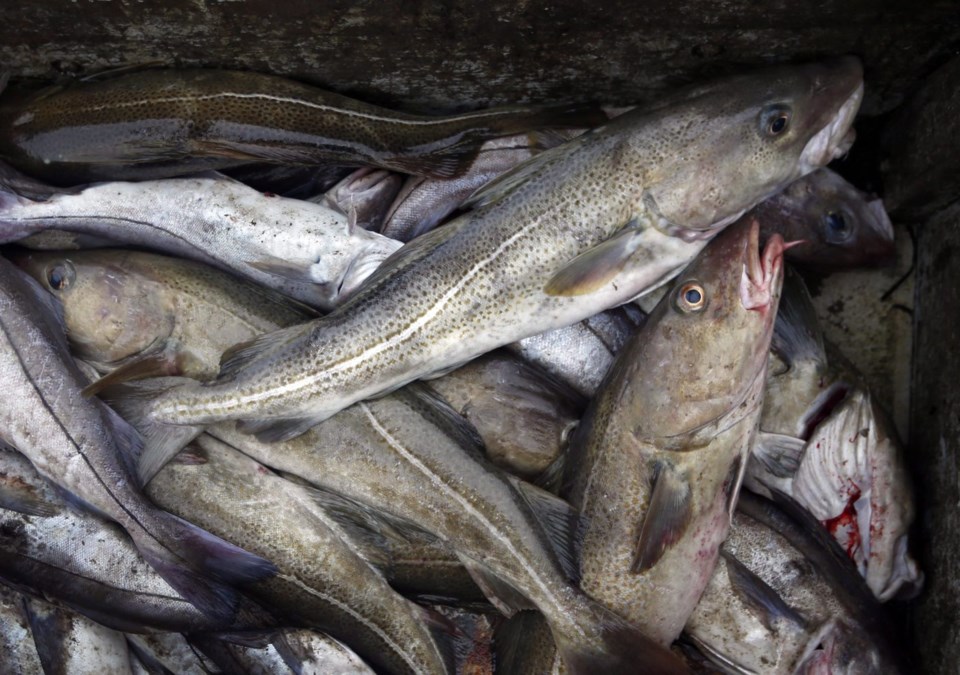HALIFAX — A new study is predicting a steep decline in global fish populations — including species in Atlantic Canada — by the end of the century, if unchecked greenhouse gas emissions continue.
The 108-page report published last week by the Food and Agriculture Organization of the United Nations projects that with an average temperature increase of between 3 and 4 C, fish biomass would decline by more than 30 per cent by 2100 in 48 countries.
China, which is the world's largest seafood consumer, is among the countries whose catches will see the sharpest declines in the world, with a 31 per cent loss.
A low carbon emissions scenario — or 1.5 to 2 C warming — by contrast, projects less than a 10 per cent loss of fish worldwide.
The study measures biomass as the total amount of fish counted in a specific body of water, using a measurement of grams of carbon per square metre of water.
Andrea Bryndum-Buchholz, a marine ecologist at Memorial University who is one of 41 contributors to the study, says in nine different projection models anticipating fish declines, Canadian fisheries are found to be vulnerable as water temperatures rise in the northwest Atlantic.
“All these models agree that fish biomass is going to decline in certain areas because water temperature is increasing,” she said in an interview last week.
It shows three-quarters of the East Coast's protected marine areas — regions that maintain the long-term conservation of marine species — fall within climate change hotspots, where waters are expected to warm at higher rates.
Bryndum-Buchholz said that has implications for the region's fishers, who could face significant challenges in the worst case emission scenarios.
“The fishing industry is super important here. It needs to be sustainable,” Bryndum-Buchholz said.
She added that if climate change is allowed to continue at its current pace, it creates pressure for fishery closures that will harm a key part of the region's economy.
“Fishing is integral to the Maritimes and other areas of the world, so we want to reduce moratoriums because the access (to fish) is important.”
Bryndum-Buchholz said governments managing fish populations could adopt a risk-based approach that is appropriate to each region, carefully monitoring biomass, animal behaviour and water temperature in each area.
“We can’t have a global solution (to food security) even though we have these global projections. It’s not one cookie-cutter approach," she said.
This approach involves a significantly higher investment and would lead governments to adjust allowable catches when there are early signs of decline, enforce catch restrictions to prevent fishing juvenile-aged fish, and adjust marine protected areas to respond more effectively as climate change continues.
Increased water temperatures can influence things like migration and breeding habits, Bryndum-Buchholz explained. Lobster migration is one example of migration habits changing, where more lobsters are moving away from waters in Maine as the Atlantic waters warm.
Areas in Atlantic Canada where there is expected warming and biomass declines include the Scotian Shelf, which follows the south shore of Nova Scotia, the Laurentian Channel, which is between Cape Breton Island and Newfoundland, and the Grand Banks, which follows the southeast corner of Newfoundland.
The Gulf of the St. Lawrence, which borders all four of the Atlantic provinces and Quebec, is the fastest warming area.
This report by The Canadian Press was first published July 17, 2024.
Cassidy McMackon, The Canadian Press




